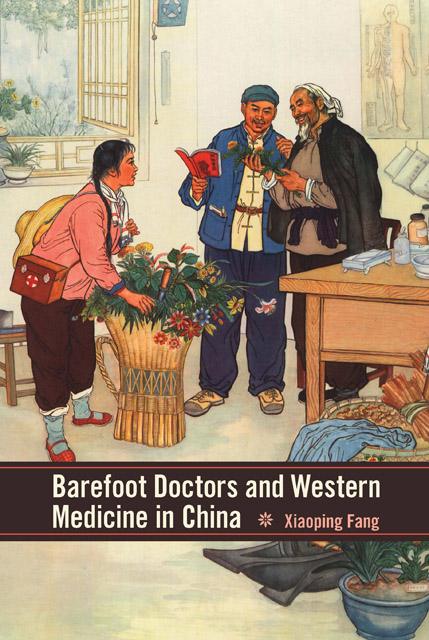Book contents
- Frontmatter
- Contents
- List of Illustrations
- Acknowledgments
- Maps
- Introduction
- 1 Village Healers, Medical Pluralism, and State Medicine
- 2 Revolutionizing Knowledge Transmission Structures
- 3 Pharmaceuticals Reach the Villages
- 4 Healing Styles and Medical Beliefs: The Consumption of Chinese and Western Medicines
- 5 Relocating Illness: The Shift from Home Bedside to Hospital Ward
- 6 Group Identity, Power Relationships, and Medical Legitimacy
- 7 Conclusion
- Appendix One The Organization of the Three-Tiered Medical System in Rural China, 1968–83
- Appendix Two Common Medicines in Chinese Villages during the 1960s–70s
- Abbreviations
- Glossary
- Notes
- Bibliography
- Index
4 - Healing Styles and Medical Beliefs: The Consumption of Chinese and Western Medicines
Published online by Cambridge University Press: 14 February 2023
- Frontmatter
- Contents
- List of Illustrations
- Acknowledgments
- Maps
- Introduction
- 1 Village Healers, Medical Pluralism, and State Medicine
- 2 Revolutionizing Knowledge Transmission Structures
- 3 Pharmaceuticals Reach the Villages
- 4 Healing Styles and Medical Beliefs: The Consumption of Chinese and Western Medicines
- 5 Relocating Illness: The Shift from Home Bedside to Hospital Ward
- 6 Group Identity, Power Relationships, and Medical Legitimacy
- 7 Conclusion
- Appendix One The Organization of the Three-Tiered Medical System in Rural China, 1968–83
- Appendix Two Common Medicines in Chinese Villages during the 1960s–70s
- Abbreviations
- Glossary
- Notes
- Bibliography
- Index
Summary
The Consumption of Chinese and Western Medicines
Together with medical knowledge and pharmaceuticals, the healing techniques of Western medicine gradually entered the village medical domain from early the 1950s onward. These new healing methods emerged gradually among village healers, particularly among the union clinic doctors. In Jiang Village, Chen Hongting, who had practiced as a Chinese medicine doctor in his father’s footsteps, was already prescribing a few tablets of aspirin before liberation. After 1949, he learned to administer injections, to obtain a blood sample, and to hatch schistosomes from human feces in order to diagnose schistosomiasis. After 1958, Chen Zhicheng recalled, “We carried medical kits during prevention work and provided mobile medical services. We bought quite a bit of Western medicine and used a lot.” In 1961, when he followed his master Zheng Buying to study Chinese medicine, they were already using thermometers, blood pressure meters, and stethoscopes for diagnosis. He said, “We were Chinese medicine doctors, but we used thermometers to measure body temperature.”
As early as 1953, official documents had already criticized some Chinese medicine doctors for misunderstanding Chinese medicine’s great contribution to public health: “they had the incorrect understanding that Chinese medicine was not scientific, that it could not treat illnesses, and that it had no future. [They believed that] it was not acceptable to prescribe Chinese medicine. In these circumstances, the majority of Chinese medicine doctors started to use Western medicine and stopped using Chinese medicine.” Many students who graduated from the advanced Chinese medicine training schools also abandoned Chinese medicine. Prescribing Western medicine also became an important way of making money for rural medical practitioners, both private medical practitioners and union clinic doctors. Some union clinics faced criticism for treating patients with an injection of amidopyrine (a nonopioid analgesic, antipyretic, and anti-inflammatory) no matter the illness, and a few administered Western medicine injections and powders. It was very common for Chinese medicine doctors to prescribe streptomycin, penicillin, and anesthetics, regardless of the disease. Although Western pharmaceuticals were scarce in the mid-1960s, some doctors were already overprescribing them. The neighboring Lin’an County Health Bureau suggested in 1966 that “to improve the efficiency of our medical services, we need to take very seriously the problems [of doctors] disregarding proper diagnostic techniques and proper principles for prescribing medicine in order to make money.” Despite official criticism, the advent of Western medicine became an irreversible trend.
- Type
- Chapter
- Information
- Barefoot Doctors and Western Medicine in China , pp. 94 - 124Publisher: Boydell & BrewerPrint publication year: 2012

